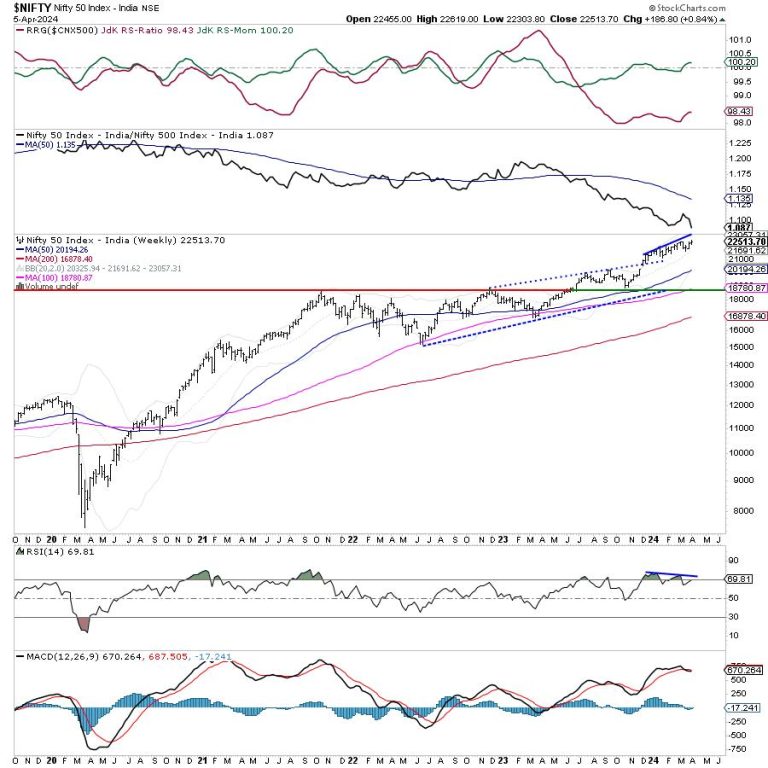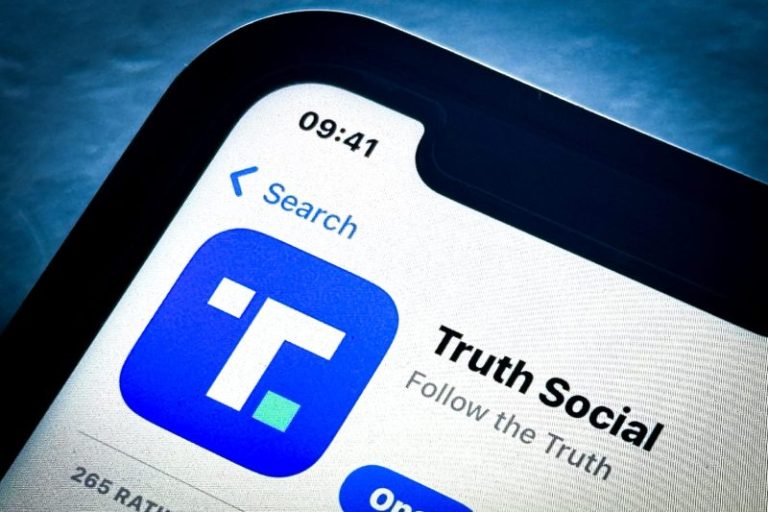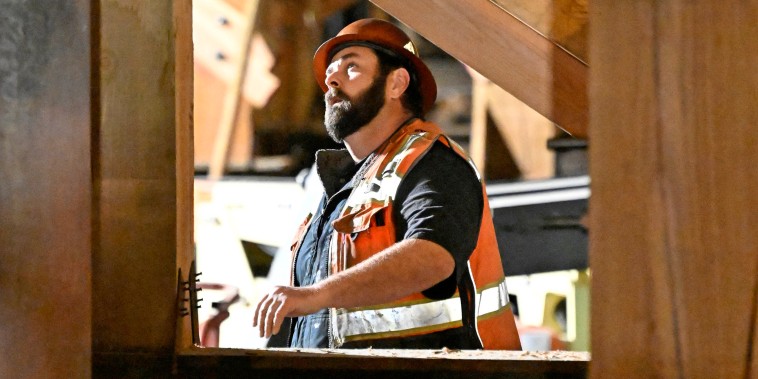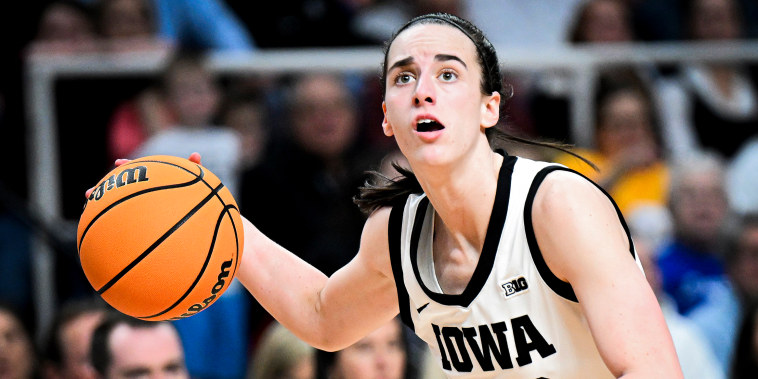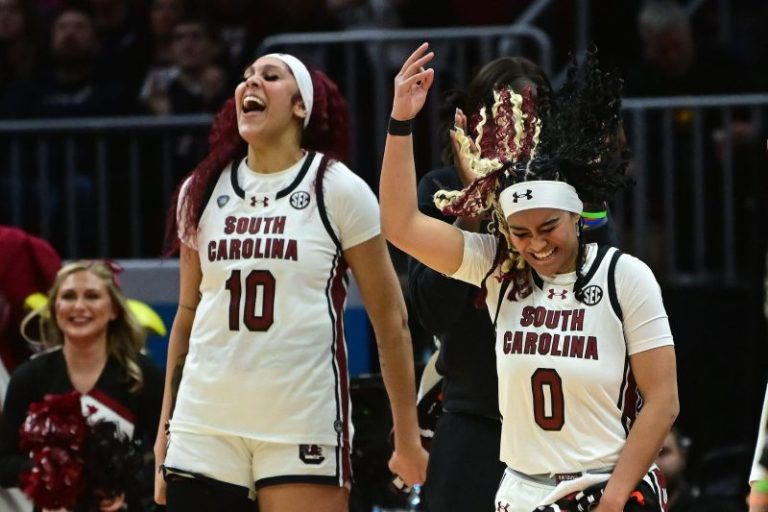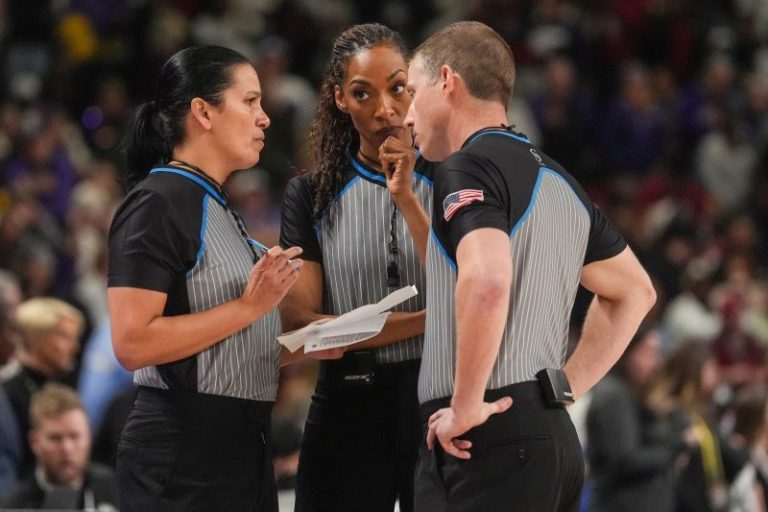In the previous technical note, it was categorically mentioned that while the markets may attempt to inch higher, they may not form anything beyond minor incremental highs and may largely continue to stay under consolidation. In line with the analysis, the Nifty did form a new lifetime high, but eventually continued to consolidate and avoided any strong move on the upside. The markets had a modest trading range; the index oscillated in a 315-point range over the past five sessions. The volatility slipped further; India Vix came off by 11.65% to 11.34. The headline index closed with a modest weekly gain of 186.80 points (+0.84%).
From a technical perspective, the NIFTY will need to move past the 22550-22600 zone with a strong thrust for any sustainable move to take place. Further, the Options data also suggests that strong Call OI built up in this zone may continue to pose resistance for the markets. A sustainable uptrend would commence only after the Index moves past this zone; until this happens, we may see the markets finding selling pressure at higher levels increasing the need for vigilant protection of profits until a fresh breakout is achieved.
A quiet start is expected to the new week; the levels of 22600 and 22790 would act as potential resistance levels. Supports come in at 22380 and 22100 levels. The trading range is likely to stay modest over the coming week.
The weekly RSI is 69.81; it continues to show a mild bearish divergence against the price. The weekly MACD is bearish and trades below its signal line.
A spinning top occurred on the candles. Such candles typically have small real bodies because of little difference between the open and close price. They show the indecisiveness of the market participants. Such formations, if they occur near the highs often have the potential to stall the upmoves.
The pattern analysis of the weekly charts shows the markets being in a firm uptrend. However, that being said, the markets are also exhibiting signs of fatigue at higher levels. They are also showing a minor loss of internal strength as they mark incremental highs along with minor negative divergences. All and all, while the trend continues to stay intact, there are possibilities of markets staying under some ranged consolidation. The nearest support for the Nifty exists at 20-week MA which is placed at 21691.
All in all, we are likely to see some risk-off setup in the markets. We can expect defensive pockets like Pharma, IT, FMCG, etc., to offer better relative strength than the others. However, the banking space is likely to stay resilient as well. It is strongly recommended that unless a strong breakout is achieved with Nifty moving past the 22550-22600 zone with a thrust, all up moves must be used to protect profits at higher levels. Low levels of VIX too remain a concern and may infuse some spikes in volatility. A cautious approach with one eye on the protection of gains is advised for the coming week.
Sector Analysis for the coming week
In our look at Relative Rotation Graphs®, we compared various sectors against CNX500 (NIFTY 500 Index), which represents over 95% of the free float market cap of all the stocks listed.
Relative Rotation Graphs (RRG) show that the Nifty Commodities, Energy, and Infrastructure indices are inside the leading quadrant. However, they are seen giving up on their relative momentum. Besides these groups, PSU Banks, Pharma, and Auto groups are inside the leading quadrant. The Metal index has also rolled inside the leading quadrant. These groups are set to relatively outperform the broader markets.
The Nifty PSE index has rolled inside the weakening quadrant. Besides this, the Midcap 100 and the Realty Indices are also inside the weakening quadrant.
The Nifty IT has rolled inside the weakening quadrant. The Nifty FMCG and Media indices also continue to languish inside the weakening quadrant. The Services sector index is also inside this quadrant but it is seen improving on its relative momentum.
While the Nifty Consumption Index is inside the improving quadrant, the Banknifty and Financial Services index has rolled inside the improving quadrant hinting at a potential end to their relative underperformance.
Important Note: RRG™ charts show the relative strength and momentum of a group of stocks. In the above Chart, they show relative performance against NIFTY500 Index (Broader Markets) and should not be used directly as buy or sell signals.
Milan Vaishnav, CMT, MSTA
Consulting Technical Analyst
You need a lot of cash — and guts — to short Trump Media stock right now.
Trump Media, which began being publicly traded last week, is now far and away the most expensive U.S. stock to sell short, according to S3 Partners, a leading financial data marketplace platform.
But plenty of people are still willing to pay those steep costs, based on their belief that Trump Media’s share price is bound to fall dramatically from its Wednesday closing of $48.81.
Investors who wanted to borrow Trump Media shares to sell them short on Wednesday would have had to pay annual financing costs of between 750% and 900% of the price of the stock, said Ihor Dusaniwsky, managing director of predictive analytics at S3 Partners.
That means a short seller of the DJT ticker who took a position Wednesday would have had to pay costs of between about $1 and $1.22 per day to the lenders.
To break even on a new trade after one month, a short seller would have to see the share price of Trump Media drop by more than $30.
That could be a tough position to be in, given the fact that many of Trump Media’s shareholders are individual investors motivated to buy the stock by their support for former President Donald Trump, the company’s majority shareholder and the highest profile user of its Truth Social app.
Investors who started short-selling Trump Media earlier than Wednesday are paying less in costs, which are collected at the end of each month, Dusaniwsky noted. But not that much less.
Existing short positions in Trump Media were paying costs of 565% annually on Wednesday, he said.
For comparison, the average stock borrow financing cost for a short position was just .71%.
“It’s the most expensive stock borrow,” Dusaniwsky said of Trump Media. “Every day the stock has to go down 78 cents just to make up financing costs, just to put you to zero.”
“People are looking for an extraordinary price drop in an extremely short period of time,” he said. “If you’re talking about holding your stock for a month, the stock has to drop by more than a half for this to be profitable.”
Dusaniwsky characterized Trump Media’s short sale financial costs as “extraordinarily rare.”
“This is a ‘black swan’ event,” he said. “As something that’s a legitimate trade, this is way, way, out on the curve.”
The second-most expensive stock to short Wednesday was Canopy Growth, whose short sellers were on the hook for costs of 198% of the stock price annually, according to S3 Partners data.
Short sellers in Beyond Meat, the third-most expensive stock by costs to short, would have paid 79% annually.
Short sellers are effectively betting that a stock’s price will drop below the price at which they borrowed the shares that they then sold. If the price does fall, they can buy shares to return them to the lenders, pocketing the price difference.
But if the share price rises, they can be forced into the uncomfortable position of having to buy shares and lose money on the trader or increase the collateral they posted to secure the trade — a “short squeeze.”
As of Wednesday, the short interest in Trump Media — or the value of shares borrowed for short trades — was about $255 million. Many of those short positions were acquired in Digital World Acquisition Corp., the publicly traded shell company whose merger in late March with Trump’s social media company led to Trump Media becoming publicly traded.
In March, short sellers’ positions in DWAC and then in Trump Media were down about $126 million in so-called mark-to-market losses, a drop of nearly 70% for the month.
Despite that and despite Trump Media’s high cost to sell short, plenty of investors are interested in doing just that.
They are drawn by the fact that the share price gives it a market capitalization of $6.6 billion despite having just $4.1 million in revenue last year.
“What I’m hearing on the Street is that if [an amount] of stock becomes available, shorts are taking it down,” Dusaniwsky said.
When Trump Media went public last week, its price skyrocketed by more than 50% percent within the first minutes of trading, to a high of $79.38 per share.
But on Monday, the share price plunged 21% after Trump Media reported a loss of $58 million in 2023.
Dusaniwsky said that short sellers in Trump Media were getting into those trades because “they think this stock is overbought” and that there is a real opportunity to make money from a dramatic price drop.
Those sellers are “hoping to make a 20-plus percent return on that trade,” which means the share price would have to fall by up to 70% to cover the financing costs of the trade, he said.
The investors who can borrow shares from their brokers for a Trump Media short sale are “good customers” of those brokers, he said.
“When the stock borrow becomes this difficult, only the best clients are getting that,” he said. And the best clients are the ones with the reserves of stock or other collateral to cover their positions, he added.
But getting shares to borrow to sell short is increasingly difficult. Out of about 5 million shares of Trump Media available to short, 4.94 million have been already borrowed, which drives up the financing costs.
“This is now a squeezable stock because the shorts are losing money, the interest rates are so high, and there’s also a recall risk,” Dusaniwsky said, referring to a situation when a broker needs to obtain shares from a short seller to sell for a customer in a long trade position who originally bought the shares on margin.
Dusaniwsky said short sellers are in a tight spot because many of Trump Media shareholders are not in the mood to sell their shares, and thus drive down the price, and because there are so few shares to borrow and sell short.
The U.S. economy added 303,000 jobs in March, blowing past expectations and indicating that economic growth remains on a firm footing.
The reading matches the largest one-month boost in payrolls since May 2023 and is a significant increase from the 270,000 added in February and the 256,000 in January.
Economists had forecast that about 200,000 jobs would be added for March.
The unemployment rate declined slightly to 3.8%, and wage growth came in at 4.1% over the last 12 months, the Bureau of Labor Statistics said.
Sectors seeing the largest job gains included hospitals, restaurants, local governments, large warehouse retailers, and specialty trade contractors. Manufacturing added zero jobs on net.
“The economy continues to display remarkable resilience, defying high interest rates and fears of a substantial slowdown,” Mark Hamrick, Bankrate’s senior economic analyst, said in an emailed note.
He added that more people were both working and looking for work, something that brought the labor force participation rate up to 62.7% — another sign of a strong economy.
The strong data point may prompt the Federal Reserve to continue to push back the interest rate cuts it had been signaling for this year. That means the cost of borrowing money for everything from credit cards to autos to homes is likely to remain elevated for some time. By keeping interest rates high, the central bank seeks to cool consumption for goods and services — too much of which keeps price growth elevated.
Following the release of Friday’s report, traders shifted the odds of the first rate cut of 2024 from June to September.
Yet with the pace of hourly pay slowing in March to the slowest annual rate of the post-pandemic period, some economists are optimistic that the ongoing jobs boom may not turn into higher inflation.
A series of new reports suggest the surge in immigrant workers in recent years, while a politically volatile topic, has helped keep a lid on the pace of pay increases that may be helping fuel inflation.
“Labor supply increased significantly [in 2023], thanks to rising participation among 25-to-54-year-olds, as well as a strong pace of immigration,” Federal Reserve Chair Jay Powell said in a speech earlier this week.
Nevertheless, Powell said the central bank was in no rush to start bringing interest rates down.
“We do not expect that it will be appropriate to lower our policy rate until we have greater confidence that inflation is moving sustainably down toward 2 percent,” Powell said. “Given the strength of the economy and progress on inflation so far, we have time to let the incoming data guide our decisions on policy.”
In a note to clients following the release of Friday’s jobs report, Seema Shah, chief global strategist at Principal Asset Management, said that while the strong payrolls number could mean a delayed interest-rate cut, next week’s inflation report will be more critical in determining what the Fed does next.
“Today’s report should reassure markets that, if the Fed does not cut in June, it’s because the economy is still strong and earnings should remain in an upswing,’ she wrote.
The women’s Final Four this weekend is set to smash viewership records as star players and greater TV coverage drive more fans than ever to the sport.
It kicks off this evening with No. 1 seed South Carolina facing off against No. 3 seed N.C. State at 7 p.m., followed by No. 1 seed Iowa competing against No. 3 seed UConn.
Ratings for the tournament are expected to reach well into the double-digit millions. Last week’s Iowa-LSU matchup reached 12.3 million, a new record for women’s and the second-most-watched game of the entire NCAA basketball tournament, irrespective of gender.
According to the ticket site TickPick, the current “get-in” price for the men’s Final Four is $416; for the women’s, it’s $451.
Soaring interest in the women’s game is the product of two main phenomena, experts say: a new batch of stars, including a once-in-a-generation player; and the increasing coverage those players now receive, thanks to greater investment from networks in broadcasting the games.
At the top of the star wave stands Caitlin Clark, the University of Iowa guard who has broken not only the most records for scoring in the women’s game, but earlier this year surpassed Pete Maravich as the all-time leading NCAA career basketball scorer, period. That’s a record that had stood for 54 years.
Clark has been a standout since her arrival at Iowa four years ago, leading the Hawkeyes to the Sweet 16 as a freshman while being unanimously named Big 10 Freshman of the Year and first-team All-Big Ten.
She has gone on to win the NCAA’s most valuable player award the past two years.
At the conclusion of this season, Clark, 22, will leave for the WNBA.
Yet other stars are primed to keep the momentum going for the women’s games, said Ben Portnoy, who covers college sports for Sports Business Journal. While legendary women’s coaches like Tennessee’s Pat Summitt, who died in 2016, and UConn’s Geno Auriemma used to be the biggest names in the game, increased — and more consistent — media coverage has led to more players sharing in the spotlight.
In the 2021 season, ESPN and ABC switched to a national broadcast format for the women’s tournament that matched how the mens tournament was televised.
‘Broadcast, over the air coverage, had been lacking,’ said Jon Lewis, who runs Sports Media Watch, a website that tracks athletics broadcasting.
He said ESPN simply took a calculated gamble that there was finally enough demand for the women’s game that keeping it on regional broadcasts or on secondary networks like ESPN 2 was limiting opportunities for growth.
“ESPN’s a business — there’s no charity involved here,” Lewis said. “If they see the women’s Final Four is getting traction on ESPN 2, they started to wonder how many more it could get on ESPN.”
The increased coverage has coincided with a key differentiator that now separates the men’s and women’s games: professional eligibility rules — something that is allowing the women’s game to produce more stars more consistently than the men’s teams.
While women cannot go pro until they turn 22, the age limit is just 19 with one year of college for men.
“The front-line stars in men’s aren’t sticking around as much as in the women’s game,” Portnoy said. “The women’s game benefits from that.”
Among the new crop set to dominate next season’s women’s game: the University of Southern California’s Juju Watkins, Villanova’s Lucy Olsen and Notre Dame’s Hannah Hidalgo.
Portnoy said that as a result of men’s players going pro earlier, there may now be fewer household names in that sport than in women’s. And that’s reflected in some women’s games earning higher ratings this year than men’s games.
But while the men’s game may also increasingly suffer from a lack of stars, there is less structural need for them to get eyeballs, Lewis said. Instead, the lack of some traditional male-dominated powerhouses, like Duke or Kentucky, making it to the final rounds has also kept ratings growth slow this year.
The women’s game is more star-driven, Lewis said.
The end of Clark’s superstar college career could mean this year proves a high watermark for women’s tournament viewership, he said. At the same time, a new viewership floor has been set — and a lesson learned by the networks that the audiences for the women’s game are potentially huge.
‘Between the growth underway before Caitlin Clark, and the growth attributable to Caitlin Clark — I don’t see us going back to the era where it averaged fewer than 3 million viewers,’ Lewis said. ‘So there’s a new permanent higher bar for this tournament going forward.’
CLEVELAND — Two words: Kamilla Cardoso.
Who wouldn’t feel good with a 6-foot-7 player sitting in the paint, especially a 6-foot-7 post who has steadily improved all season and was basically unstoppable against NC State on Friday night, scoring 22 points (on 10-of-12 shooting) and grabbing 11 rebounds in just 23 minutes.
The Gamecocks won 78-59 to advance to their third national championship game and will play Iowa in a rematch of last year’s semifinal. The Hawkeyes defeated the UConn Huskies 71-69.
“You play to your strength,” coach Dawn Staley said, “and she’s a strength of ours.”That’s putting it mildly, though it was far from a smooth night for the Brazilian native.
First, Cardoso had a contact issue, fiddling with her left lens when she went to the bench early in the first quarter. But after she got it figured out she owned the second quarter — and the Wolfpack — scoring 10 points in 3 minutes, 41 seconds.
FOLLOW THE MADNESS: NCAA basketball bracket, scores, schedules, teams and more.
Then, panic.
Gamecocks fans all held their breath when, with less than two minutes to play in the first half, Cardoso landed awkwardly under the basket after a missed shot and came up limping.
It was instantly obvious Cardoso was in pain, hobbling and grimacing up and down the floor a couple times before committing a foul with 1:39 left — possibly to stop play and get out of the game. She didn’t bother going to the bench, instead heading immediately to the locker room. When she left, she had 16 points, seven rebounds and one block, leading South Carolina to a 32-31 halftime lead.
When she started the second half, Cardoso was still in obvious pain. You could see it all over her face. But even if she’s not at full strength, she’s a load on the block. She scored eight points in eight minutes as South Carolina built as much as a 24-point lead in the third quarter, taking a 61-37 lead into the fourth.
‘It was hurting,” Cardoso said afterward in the locker room, “but I was gonna try to come out there no matter what.”She added that she’d seen the doctor already, and expected to play Sunday. The compression sleeve she put on at halftime helped keep her knee warm, a necessity for the next 40 or so hours before the Gamecocks tip off Sunday at 3 p.m. ET.Gamecocks guard Te-Hina Paopao called Cardoso “a beautiful Brazilian warrior” and, noting her toughness, said “she’s gonna play through some pain, she’s gonna push through that. She’s definitely gonna be OK.”
The most impressive part of Cardoso’s game isn’t the fact that she played through pain Friday night, however. It’s that she’s improved throughout the season.
Most people take noticeable jumps in skill, strength or athleticism in the offseason, when they can devote hours to their craft. It’s hard to work on your individual game during the season, when you’re juggling class, scouting reports and daily practice that’s usually focused on the team.
But just a couple months ago, Cardoso had a bad habit of getting buried on the block. She was often rushed when she caught the ball and took terrible angles on shots, frequently shooting underneath the rim.
Against NC State, she looked like a first-team All-American. She was patient and polished, taking her time to feel the defense before going the other way and scoring — often through a few sets of outstretched arms.
Staley has noticed Cardoso’s improvement, too.“She’s a better practice player, a better preparer,” Staley said. “She’s more in tune, she knows exactly what we need her to do, she watches film a lot more on her own, and with Coach (Lisa) Boyer. She’s more willing to do all the things (we need to do) to create an advantage for her on the floor.”
For her size, she has impressive body control. And given her mobility, she could be making a case to move up to No. 2 in this month’s WNBA draft. Iowa’s Caitlin Clark is expected to be taken No. 1 by the Indiana Fever. (Stanford All-American Cameron Brink has long been projected to go second, to the Los Angeles Sparks; Tennessee’s Rickea Jackson is projected to go third; Cardoso is expected to go No. 4, also to the Sparks.)
“Greatness is a process, and she’s still very much in the beginning stage of her greatness,” Staley said. “I think we will see her play a lot better when she’s with pro players.”
And none of this even takes into account her impact on defense, the end of the floor that has long been the Gamecocks’ calling card.
South Carolina has been the top defensive team in the country all season, and Cardoso is a big reason why. Opposing teams are hesitant to drive to the rim or even pull up in the paint because of her ability to alter their shot. Every time an NC State player caught the ball when Cardoso was on the floor, you could practically see the questions pass through the minds of Wolfpack guards: Should I shoot it here? Or drive it and potentially get it sent to the fifth row?
Late in the third quarter, Cardoso got sent to the bench, taking some time on the exercise bike — the Gamecocks training staff was likely trying to keep her knee warm — before enjoying the show her teammates put on.
Sunday, it’ll be her turn to take center stage again. How much better can she get between now and then? The Iowa Hawkeyes don’t want to know.
Email Lindsay Schnell at lschnell@usatoday.com or follow her on social media @Lindsay_Schnell
Kellie Harper blinked back tears, swallowed the lump in her throat and took a deep breath.
“In these games, these teams are really good,” Harper said. “One mistake, one missed shot, one missed assignment at any point in the game can change it.”
Harper, who was fired Monday by Tennessee, was talking after Tennessee’s 79-72 loss to third-seeded NC State in the second round of the NCAA Tournament, a game in which a critical call late might have impacted the outcome.
After Tennessee cut the deficit to four with 46 seconds to go, the Lady Vols pressed, and it looked like they stole the inbounds pass — until the whistle blew. Officials said before the inbound, NC State had called timeout. Harper was in disbelief.
FOLLOW THE MADNESS: NCAA basketball bracket, scores, schedules, teams and more.
Was it a mistake by the officials? Harper wouldn’t go that far. But in a season that’s been rife with complaints from all corners of the country, it was the second time in as many weeks that officiating became a talking point late in a Tennessee game: In the SEC Tournament semifinals March 9, a missed travel call on South Carolina with 3.7 seconds to play eventually set up the Gamecocks to bank in a game-winning 3 at the buzzer.
Harper, who won three titles as a player at Tennessee under legendary coach Pat Summitt, wasn’t fired last week because of officiating. But her point still stands: as women’s basketball explodes in popularity and administrators realize its power as a revenue-generator, pressure to win has ratcheted up. And that makes every call, especially in a close game, matter.
For all the discourse around the varying issues in college sports — out-of-control, booster-led NIL collectives, a transfer portal that never stops churning and the looming reality of revenue sharing with athletes — coaches, administrators and even officials agree on one thing: The officiating in women’s basketball needs major work.
The NCAA declined to make Penny Davis, the head of women’s officiating, available to USA TODAY Sports. But others spoke about one of the game’s most problematic issues.
“I think to the overall point as the game has gotten more spotlight and just more people purchasing tickets, watching on television, the fundamental question as administrators is, have we done enough to look at the officiating?” Utah athletic director Mark Harlan told USA TODAY Sports. “And I think the answer is no.”
‘The officiating needs to grow’
In conversations with more than 20 coaches, administrators and officials, both current and former, they say the issues are substantial and wide-ranging: confusing calls in the post, inconsistency from game to game — and sometimes quarter to quarter — misapplications of rules and a glaring lack of accountability.
UCLA coach Cori Close was asked about the 37-17 disparity in free throw attempts that favored Southern California after her team lost 80-70 in double overtime to the Trojans in the Pac-12 Tournament semifinals.
“If our game is going to grow at a rate,” she said, “the officiating needs to grow at the same rate.”
Walz explained it like this: Not that long ago, when parity was scarce in women’s hoops, a few bad calls at the end of the game might lead to the better team winning by 15 instead of 20. Now, bad calls can change the outcome.
Women’s players today are bigger, stronger and faster. They sky for rebounds and blocks and occasionally get called for goal-tending. They finish tough shots through contact and talk trash after.
But there’s a double standard with who can yak and who can’t: In a December game at Virginia, two NC State players were hit with technicals after screaming “And one!” in celebration — even though neither were taunting opponents. ESPN analyst Debbie Antonelli was beside herself. “What are we doing?!” Antonelli cried, obviously annoyed.
In contrast, when Stanford All-American Cameron Brink fouled out in the Cardinal’s second-round win over Iowa State, turned to the official and said “(expletive) you” as she walked to the bench — a clip that circulated widely on social media — she wasn’t penalized.
Coaches take most issue with how fouls are called in the post — where players have gotten stronger and more physical. Inconsistency is a problem across the country, and was on full display during the NCAA Tournament. Players struggle to adjust.
In the first Elite Eight game, Oregon State-South Carolina, OSU’s All-American post player Raegan Beers picked up her third foul with 56 seconds to play in the first half when she and Sania Feagin got tangled going for a rebound. Both fell to the floor but the replay showed minimal, inadvertent contact.
ESPN analyst Rebecca Lobo, a former All-American post, was outraged by the foul. And when the broadcast turned to longtime women’s official Lisa Mattingly, who now assigns games in the SEC, for an explanation, she couldn’t defend the call.
After OSU lost 70-58, Beavers coach Scott Rueck said, “we were walking on eggshells out there, playing in a china closet, trying to avoid that fourth or fifth foul. Because of that, you play a little tentative.”
Officiating snafus distracted from other games, too.
In Notre Dame’s Sweet 16 loss to Oregon State, Irish point guard Hannah Hidalgo, a first-team All-American, spent more than four minutes on the bench in the second quarter when officials told her she had to remove her diamond stud nose ring.
Hidalgo had played with the piercing all season, and told reporters afterward that the referees had told her she could play with it in against the Beavers as long as it was covered. But at the end of the first quarter, officials told her to take it out. She called the move ‘BS’ and said it disrupted her game.
In Raleigh, official Tommi Paris had to be subbed out at halftime of the NC State-Chattanooga game because of a ‘background conflict.’ Paris has a master’s degree from Chattanooga, and didn’t disclose it before the game.
Challenge of getting quality people in the officiating pool
Nearly everyone acknowledges that retention of good officials is a problem, too — one they’re not sure how to solve.
From the league’s birth in 1996 to 2005, Val Ackerman served as president of the WNBA. As commissioner of the Big East since 2013, she has a unique view on the growth of the women’s game.
“Over the last 10-15 years, the women’s game has gotten faster and more physical, which makes the officiating job, which is hard to begin with, even tougher,” Ackerman told USA TODAY Sports. “The game is just accelerating at such a pace, we have to make sure we’re getting quality people into the officiating pool.”
But getting people into that pool is challenging. Not many former players default to officiating, and those who do often give it up quickly, unwilling to put up with screaming parents and coaches who have become menacing and even violent at the pipeline entry point (which, in the beginning, also comes with poor pay).
If officials stick with it and rise to the college and professional ranks, Ackerman said the NBA and WNBA add another hurdle. The NBA has told women’s officials if they want to work WNBA in the summer, they need to work NBA G League games in the winter. That means good officials are being pulled away from the college game.
Pay is an issue, too: Some conferences pay men’s officials more, which can force women’s officials to pick up more games — like working four in five days — and can lead to some not being as sharp as they want. (In the NCAA Tournaments, men’s officials are paid the same as women’s officials.)
While salaries vary by factors including experience and division of play, those numbers are not readily available. According to a 2022 Associated Press story, 15 of the largest and most profitable conferences pay officials in the men’s game an average of 22% more than women’s officials. Ackerman told USA TODAY Sports that the Big East will pay its men’s and women’s officials the same starting next season, but wouldn’t disclose amounts.
In college, officials are independent contractors who are paid a game fee and must cover all their travel expenses. Conference supervisors assign games during the regular season; the NCAA and Davis don’t get involved until the tournament. Ackerman described it as a ‘fragmented’ system.
“We need to make sure that we continue to recruit and develop the next generation of officials,” Lynn Holzman, the NCAA’s vice president for women’s basketball, told USA TODAY Sports. “You have to make sure that, as our sport continues to elevate and grow, you’re also (growing) such an important part of the game, having officials there that will do the job and perform at the level we need them to perform.”
One idea that’s been floated before is making officials NCAA employees. But that would require wholesale changes from NCAA leadership across sports, and most don’t think it’s realistic.
The Power Four conferences ballooning to 16-18 teams, plus the collapse of the Pac-12, is cause for more headaches.
“It’s gonna get complicated next year with these nationwide conferences, because one of the issues that hasn’t been discussed is, how is officiating going to work in those leagues?” Ackerman said. “They’re literally gonna be having referees ping-ponging across the country to work their games, which is going to add to wear and tear, which is ultimately going to affect the quality of work that they do.”
Concerns of accountability and transparency
Across the country, coaches told USA TODAY Sports that the single biggest problem in women’s basketball officiating is a lack of accountability and transparency.
“The game has come so far, it’s on the rise,” said Utah coach Lynne Roberts. “I know officials work hard and try their best; I do, too. But I’m held accountable for my actions as a head coach, and it makes me better to have to take ownership. What recourse and accountability system is in place for officiating?”
On January 12, Utah was trailing Stanford 65-64 with 55.8 seconds left. After a Stanford play broke down, the Cardinal called a timeout and Kiki Iriafen took a shot with 25 seconds left. The ball left her hand after the shot clock went off, but the whistle didn’t blow. Stanford grabbed an offensive board, and Utah was forced to foul. Utah lost 66-64.
Roberts was irate. She told USA TODAY Sports that shortly after the game, the Pac-12 admitted its officials had ‘missed a game-altering call.” She asked them to put out a statement saying as much, but the conference refused.
It was far from the only are-you-kidding-me? moment this season.
In February, Louisville was leading Syracuse, 72-71, with 2.3 seconds left when the Cardinals’ Olivia Cochran was whistled for an intentional foul against guard Dyaisha Fair. Cochran did foul on purpose in an effort to stop the play — Louisville only had two fouls and the Orange would not have shot free throws had it been a common foul — but officials ruled she hadn’t gone for the ball, and awarded Syracuse two shots. The Orange won 73-72.
Incensed, Walz went off in postgame, describing it as, “a God-awful call. It’s absolutely terrible officiating. They should be embarrassed … somebody has to start holding the officials accountable.”
The next day, Walz was fined $20,000. The ACC didn’t comment further, saying in a release it considered the matter closed. No one ever admitted publicly that officials shouldn’t have whistled it intentional. But the official who made that call, Carla Fountain, didn’t work another Louisville game.
“There’s stuff that’s missed all the time, and I get that,” Walz told USA TODAY Sports. “I don’t care about the 50-50 call, but I need the game to be administered correctly. And I’ve been saying since the 2018 Final Four, it’s interesting to me that my players have to come to a press conference and answer questions about missing shots, and coaches have to answer questions about decisions we made — why don’t officials have to answer questions ever?
“If an official misses a call, what happens to them? We don’t know. Coaches have no idea. What we do know is we see them officiating another big game the next day on TV.”
After games, coaches are usually asked by conference supervisors to fill out an officials evaluation form. Numerous coaches who spoke to USA TODAY Sports said they haven’t filled out the postgame evaluation in years.
“What’s the point?” one coach said. “It’s not like it changes anything.”
Ways to improve officiating in women’s college basketball
But coaches do have ideas for how things could improve.
One coach suggested a public, nationwide ranking system for all college officials.
“No one wants to see their name at the bottom of a list,” said the coach, who requested anonymity because they feared potential retaliation. They pointed out that players and coaches “have a number beside our name every day” — so why shouldn’t officials?
Roberts had a suggestion other coaches agreed is worth exploring: give coaches one challenge per game, similar to college football. Lose it, and it costs you a timeout. Win the challenge and you retain the timeout. Holzman said she’s started to hear interest in exploring a challenge system.
“That’s something that could be a positive,” Harper said. “I don’t want to slow the game down, but in some of these tight games you want to make sure you get it right.’
Rule changes have been floated, too, particularly as it relates to physicality.
Baylor coach Nicki Collen, who is on the NCAA rules committee, said the idea of six fouls has been discussed “but we have not made it to the point where we feel like that’s a productive thing” in the college ranks.
“I think we’re trying to help officiating,” she told USA TODAY Sports. “But it’s a constant thing. Like, we think officiating is worse — but I think it’s just under a bigger microscope now. They’ve never been more critiqued, never had more film.”
Southern California coach Lindsay Gottlieb, who spent two years as an assistant with the Cleveland Cavaliers, suggested a pool report for the last few minutes of the game like they do in the NBA.
“I don’t think you can have them explain (40) minutes of calls, obviously,” Gottlieb said. “I think a pool report at the end would be neat … We just want the officiating to be at the level of game play.”
The lack of transparency was never more apparent than March 10, in the SEC championship game between South Carolina and LSU.
The game ended in a near-brawl with one player (South Carolina’s Kamilla Cardoso) ejected for fighting and five others (three from South Carolina, two from LSU) tossed for leaving the bench with 2:08 to play. South Carolina hung on for a 79-72 win. Immediately afterward, coaches Dawn Staley and Kim Mulkey answered questions about players losing their tempers. Within minutes of the final buzzer, Cardoso posted an apology on social media for violently shoving LSU’s Flau’jae Johnson to the floor.
But the three officials who worked the game — Pulani Spurlock-Welsh, Angelica Suffren and Kevin Pethtel — the ones who missed calls like LSU All-American Angel Reese grabbing a fistful of Cardoso’s hair and yanking, still haven’t talked. The SEC never issued a statement.
For years, officials have been told they should be seen and not heard, strongly encouraged to keep quiet in public instead of admitting their faults. But in an era when player misdeeds run on social media loops and talking heads debate and dissect coaching mismanagement, staying silent may be causing more angst.
Said one coach who requested anonymity: “In this day and age, that is not a good enough answer.”
Email Lindsay Schnell at lschnell@usatoday.com and follow her on social media @Lindsay_Schnell





